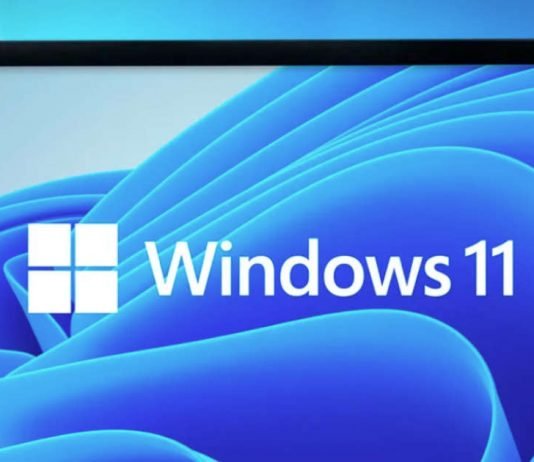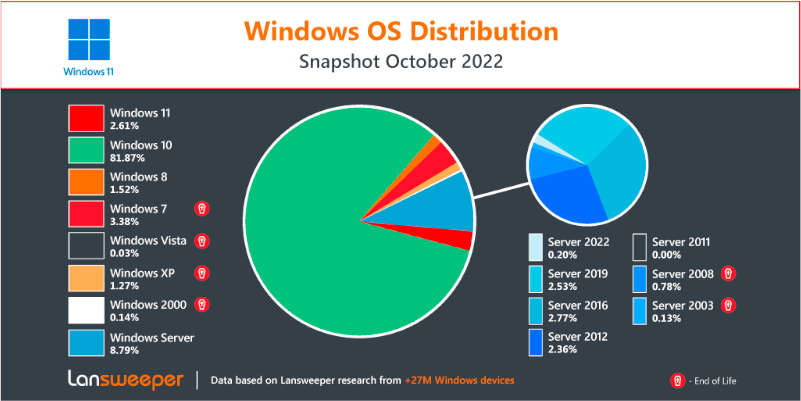On October 5th 2021, Microsoft announced the arrival of the next-generation operating system, Windows 11. At that time, the new version of the operating system brought a new “Start” menu and taskbar, powerful cloud and Microsoft 365 functions, as well as the Widgets function and Windows PC gaming experience, which attracted the attention of countless users for a while.
However, one year later, the adoption rate of Windows 11 is not as much as imagined, and many people still mainly stay on Windows 10. The main reason that hinders their upgrade is the requirements set by Microsoft, which discourages them.
Users locked out of Windows 11
On average, only 57.26% of PCs are eligible for automatic Windows 11 updates, and more than 40% of devices are not eligible.
Microsoft specifies that the minimum hardware configuration for installing Windows 11 fulfil the three main levels:
- System firmware: must support UEFI Secure Boot
- TPM: Trusted Platform Module (TPM) version 2.0
- Newer CPU(Intel 8th Gen Coffee Lake or Zen 2 CPUs) and at least 4Gb RAM and 64GB hard drive space
Although many developers have strained their brains, such as launching installation scripts to circumvent these limitations, this is not a long-term solution. Furthermore, the installation process makes it hard for people who are not extremely tech-savvy to utilise it.
It is worth mentioning that last year, according to The Verge, Microsoft revealed to it that computers that do not meet the above requirements could manually install Windows 11, but Windows Update will not automatically update the system for users. Microsoft has released an iterative version, and customers must manually download and install the file. Daily use may be unaffected, but updating the version is time-consuming and risky.
Some people may say that manual installation is also fine. However, this has little influence on individual users. Still, for IT teams who manage IT assets in large corporations, every time Microsoft issues a new version, it would be a tremendous task to install it manually on each machine.
At present, according to the detailed data from Lansweeper’s latest survey on an estimated 30 million Windows devices from 60,000 enterprises indicates that, on average, just 57.26% of workstations are qualified for the automatic update, while the remainder is not, while 42.74% do not meet the hardware requirements for Windows 11.
Additionally, while the majority of devices (92.85%) passed the memory test, about 65% of the TPM configurations of the test PCs met the requirements. In comparison, nearly 15% failed, and 20% were TPM-incompatible or not enabled.
How many devices fulfil the TPM system requirements of Windows 11?
In addition to the above-mentioned, Lansweeper also investigates the use of workstations and servers.
Compared with physical servers, the application of virtual servers to Windows 11 is not optimistic. The compatibility of the virtual server’s CPU is significantly lower, at 55.7%. Also, only 67.1% have enough memory. Even fewer are TPM 2.0 compliant, with only 1.33% of virtual workstations having TPM 2.0 enabled.
Only 2.35% of TPMs on physical servers passed the test. This means that if Microsoft creates a server OS with similar requirements in the future, about 97% of people will not be able to upgrade. For virtual servers, few servers support TPM.
However, compared with 2021, this data has shown signs of improvement. Among them, devices that meet the requirements of CPU and TPM increased by 12%, and devices that meet the requirements of memory increased by 1.8%. If this trend continues, all devices should potentially be Windows 11 compatible by 2026.
Lansweeper also conducted a survey. Since April 2022, the number of Windows 11 users has only increased by 1.17%, accounting for 2.61%. For now, Windows 10 is the most popular, with 81.87%, far ahead.
However, according to this study, the adoption rate of Windows 11 (1.27%) topped Windows XP (1.27%) but was still lower than that of Windows 7 (3.38%).
Windows 11 is expected to provide a variety of new features and advantages to users, such as an updated user interface, support for efficient multitasking, improved gaming and productivity programmes, and more. So get ready with a PC that fits the requirements of Windows 11.

